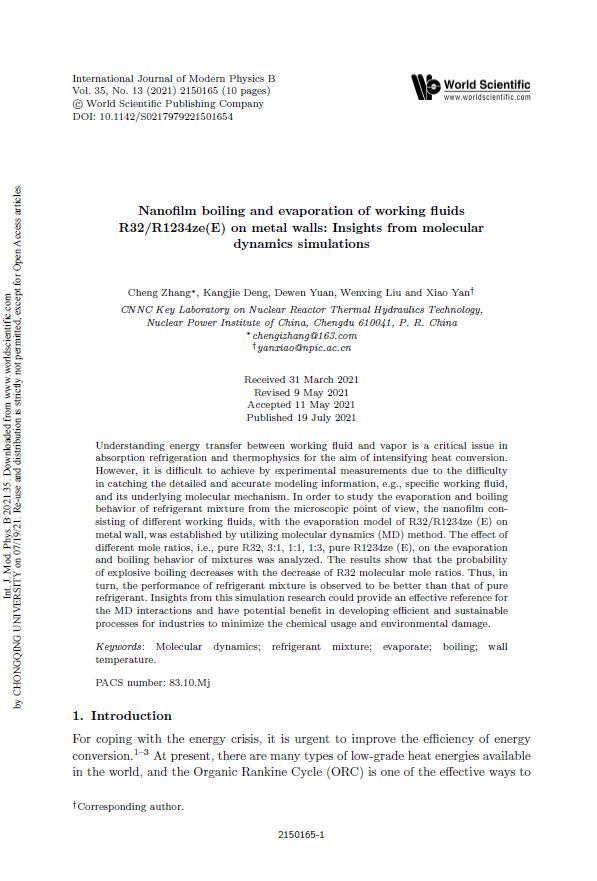Understanding energy transfer between working fluid and vapor is a critical issue in absorption refrigeration and thermophysics for the aim of intensifying heat conversion. However, it is difficult to be achieved by experimental measurements due to the difficulty in catching the detailed and accurate modeling information, e.g., specific working fluid, and its underlying molecular mechanism. In order to study the evaporation and boiling behavior of refrigerant mixture from the microscopic point of view, the nano-film consisting of different working fluids, with the evaporation model of R32/R1234ze (E) on metal wall was established by utilizing molecular dynamics (MD) method. The effect of different mole ratios, i.e., pure R32, 3:1, 1:1,1:3, pure R1234ze (E), on the evaporation and boiling behavior of mixtures was analyzed. The results show that the probability of explosive boiling decreases with the decrease of R32 molecular mole ratios. Thus in turn, the performance of refrigerant mixture is observed to be better than that of pure refrigerant. Insights from this simulation research could provide as an effective reference for the molecular dynamics interactions and have potential benefit in developing efficient and sustainable processes for industries to minimize chemical usage and environmental damage.
